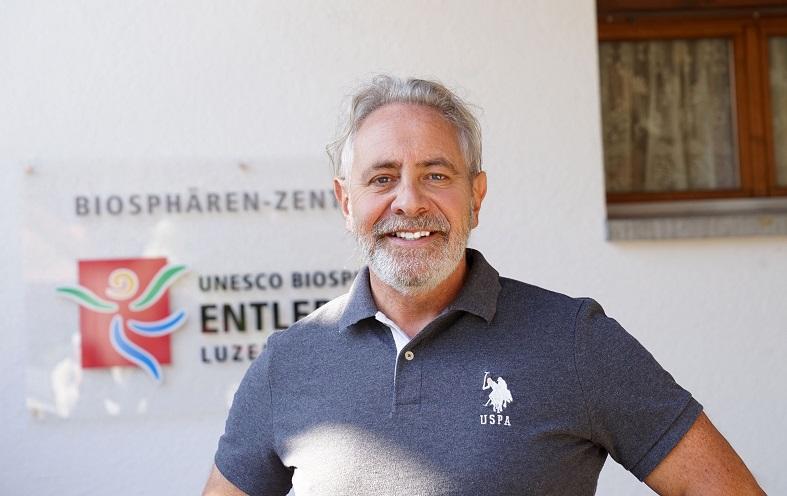
Dr Peter Brandauer, mayor of the small alpine village of Werfenweng in Austria, in this interview, shares his experience of developing a “soft mobility” concept for the popular destination near Salzburg. Learn about the successes, challenges and how Werfenweng’s innovative initiative has led to the Alpine Pearls network, with member communities spread across the European alps.
We visited Werfenweng as part of our ON TOUR Program in October 2018.
Peter, “soft” mobility has become almost synonymous of Werfenweng as destination. In a nutshell, what does the term refer to?
“Soft” means for us to push environmentally-friendly tourism development in the area of mobility – for the sake of the tourist, the inhabitants and all our enterprises. Tourists can encounter a new form of holidays, enjoying it without their car. Here in Werfenweng they can use our electric vehicles, try e-cars, take a ride with the horse carriage, be shuttled to the most exciting hiking tour – or just do what most of our vacationers do: take an easy walk through our wonderful village and surroundings.
Best is to arrive by train – we take care of all mobility services required.
Why the focus on climate-friendly mobility in Werfenweng – how did it all start?
We started to work on the project in 1994. In joint workshops with inhabitants and hosts we drew up new holiday concepts for Werfenweng. The idea which found the biggest positive reaction was to reduce traffic, by offering a holiday without a car.
Our role models were the Swiss villages without car, like Zermatt and Saas Fee. Even though, up until today, Werfenweng is quite different from these holiday destinations. We still have cars roaming our village – but we have cut down substantially on the numbers – and on the CO2 emissions and noise as well – offering quiet and “soft” vacations.
How has the idea of “soft” mobility and its implementation evolved since its beginnings in the mid-90s?
We started with a concept on a participatory basis, with studies analyzing the situation. First installations were brought into Werfenweng in 1997, like solar power stations, e-bikes and e-cars to hire, etc.
We held a lot of seminars with our hosts and accommodation providers, to facilitate further integration and development of a “touristic product”.
Finally, this product has been created: the “SaMo-Card”. This is a mobility-inclusive bonus card offering the guest a large variety of mobility and leisure services. Examples are the Werfenweng shuttle running from the rail station of Bischofshofen right up to Werfenweng to every hotel, or the e-cars which can be used.
All services integrated in this SaMoCard are free – at no extra cost. And this product has really helped us to increase visitor numbers substantially (more than 35%). It has also helped us to become a role model for other villages, trying to cut down on car traffic.
This even led to the foundation of Alpine Pearls in 2006, the network of Alpine destinations focusing on soft mobility in tourism. Alpine Pearls has evolved into a network of expert destinations, each of them different and special – and each of them focusing on soft mobility in tourism.
You have been the mayor of Werfenweng for almost 30 years. How important is political leadership for successful, sustainable destination development?
Of course, as the mayor you hold quite a lot of threads in your hands. And still, it is the people themselves who have to support this concept of soft mobility.
Our task as political representatives is to constantly work on the process of involving the people, let participation happen in real life. We are the motivators and the ones who enable external knowhow to be brought into our villages – for the sake and wellbeing of our inhabitants.
It has not always been easy and head winds have to be overcome – but with an excellent commitment and positive support from our board of the municipality it seems to be on strong feet for the future.
Urs Wohler, among others, in his interview highlighted lack of political will on the regional level as one key issue preventing destinations from becoming more sustainable, faster. Is this something you also observe?
The lack of goodwill on the side of politicians is probably one of the major reasons for the reluctant development which we see in many destinations. I can only presume that this is because of a lack of knowhow of these representatives.
Knowhow must be acquired with an open mind, must be let into the region by external resources, must be welcomed with open arms. As soon as one realizes the positive effects (economic, environmental and social!) of fostering sustainable development in tourism, you cannot oppose to it.
To your mind, how important is the sustainability performance of mountain destinations nowadays for their economic competitiveness?
In my opinion it will be of utmost importance in the long-run. Economic growth in tourism can only be achieved by sustainable measures, safeguarding our natural, cultural and social environment.
The tourism of the future is sustainable – or it is not at all.
Apart from offering climate-friendly mobility solutions for visitors, which other projects or strategies have you developed to strengthen Werfenweng’s positioning as a responsible tourism destination
What Werfenweng might be famous for is the fact that we always try to integrate the inhabitants and hosts in our planning and implementation phases. Only in this way we can secure the long-term effects and success of our projects.
All too often tourism businesses and destinations develop well-meaning sustainability strategies but ultimately fail at implementation. What does it take to succeed? Which pitfalls to avoid?
One of the major pitfalls is to engage external planners only, and not integrate the people of the destination. Resources and time have to be budgeted to start a mutual process of planning and development.
Another pitfall is to rely too heavily on public funding. We in Werfenweng only carry out projects which we also would implement WITHOUT public funding. The funding should only be used as a positive support of any project idea – not the initial and only reason for it.
The social component of destination sustainability is becoming increasingly important, especially residents’ sentiments towards tourism. What do you do in Werfenweng to keep the local community happy and to nurture a positive attitude towards visitors?
On the one hand we try to keep up our local customs and traditions. We even try to get the local community together with our guests (e.g. on our weekly festivities in summer, and at our traditional festival “Werfenwenger Weis”).
On the other hand we also try to be active in offering a modern and lively local community. Here we also stress the topic of soft mobility: inhabitants can profit from our project “WirSAMO” – a bonus programme for inhabitants refraining from using the car. We support local businesses in order to offer services to the vacationer, as well as for the inhabitant.
We have seen an increase in numbers of inhabitants in the last years – very unusual for a small Alpine village! This shows that our strategies and actions here are well-received by both the young and old.
Thank you, Peter.
Connect with Dr Peter Brandauer on LinkedIn or learn more about Werfenweng here.
Enjoyed our interview with Peter Brandauer on the soft mobility tourism strategy of the alpine village of Werfenweng in Austria? Spread the word!











